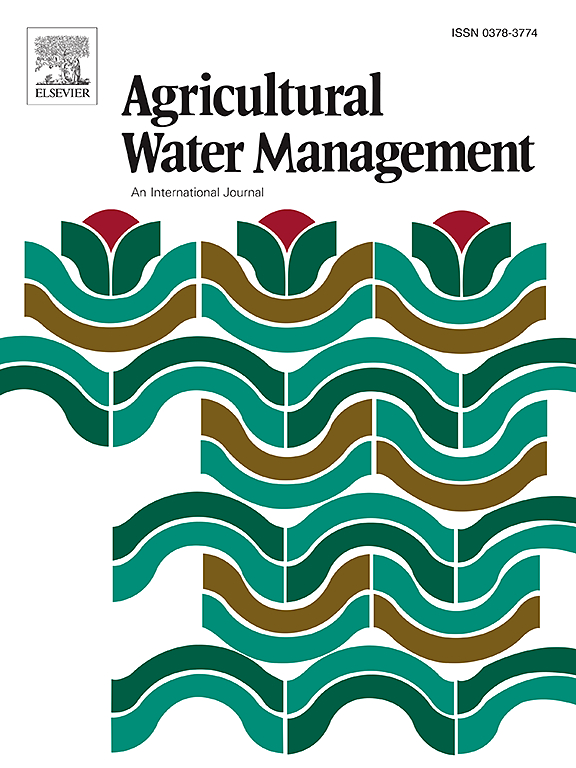Appropriate nitrogen application rate with decreased basal/topdressing ratio improves yield, quality, water productivity, and N-use efficiency of forage maize in a rainfed region
IF 5.9
1区 农林科学
Q1 AGRONOMY
引用次数: 0
Abstract
Crop cultivation in rainfed agricultural regions globally faces the challenges of water scarcity and irrational nitrogen (N) fertilizer application, causing fluctuating yields, reduced N-use efficiency, and increased environmental pollution. A two-year field experiment was conducted from 2021 to 2022 in a typical rainfed region of northwestern China to investigate the effects of four N application rates (0, 90, 180, 270 kg hm−2) and two basal/topdressing ratios (2:8 and 4:6) and their interactions on the growth, dry matter (DM) yield, forage quality, water productivity (WP), and N-use efficiency of forage maize (Zea mays L.). The LAI, DM yield, crude protein (CP) yield, food equivalent unit yield (FEU yield), WPDM, WPCP, WPFEU and aboveground N uptake of forage maize significantly (P < 0.05) increased with the increase in N application rate from 0 to 180 kg hm−2. The soil NO3-N accumulation in 0–200 cm soil layer increased linearly, whereas the partial factor productivity of applied N (PFPN) and N recovery efficiency (REN) decreased linearly with the increase in N rates. The regression analysis further revealed that the DM yield, FEU yield, WPDM, WPFEU, N uptake, PFPN and REN at all N rates were generally higher at 2:8 basal/topdressing ratio compared to 4:6 ratio. The required nitrogen application rates to achieve maximum values for DM yield, FEU yield, WPDM, WPFEU and above-ground N uptake under the 2:8 basal/topdressing ratio were reduced by 3.3 %, 7.3 %, 7.3 %, 9.6 % and 13.8 %, respectively, compared to the 4:6 ratio. Therefore, N application rate of 180 kg hm−2 and basal/topdressing ratio of 2:8 is recommended as a proper N fertilization management for achieving high yield, quality, water productivity, and N-use efficiency of forage maize in northwestern China and areas with similar climatic conditions.
适当施氮量和降低基追肥比可提高旱作区饲用玉米产量、品质、水分生产力和氮素利用效率
全球雨养农业区的作物种植面临水资源短缺和氮肥施用不合理的挑战,造成产量波动、氮素利用效率降低和环境污染加剧。本试验于2021 - 2022年在中国西北典型雨养区进行,研究了4种施氮量(0、90、180、270 kg hm−2)和2种基追肥比(2:8和4:6)及其互作对饲用玉米生长、干物质(DM)产量、牧草品质、水分生产力(WP)和氮利用效率的影响。饲用玉米LAI、DM产量、粗蛋白质(CP)产量、食物当量单产(FEU)产量、WPDM、WPCP、WPFEU和地上氮吸收量在0 ~ 180 kg hm - 2施氮量范围内随施氮量的增加而显著增加(P <; 0.05)。0 ~ 200 cm土层NO3-N积累量呈线性增加趋势,施氮部分因子生产力(PFPN)和氮素恢复效率(REN)随施氮量的增加呈线性下降趋势。回归分析表明,各施氮水平下,基肥/追肥比为2:8时,全氮产量、全氮单产、全氮单产、全氮单产、全氮单产、全氮吸收、全氮单产和全氮单产均高于基肥/追肥比为4:6时。在基肥/追肥比例为2:8的条件下,干物质产量、低氮素产量、低氮素、低氮素和地上氮吸收量分别比4:6降低了3.3 %、7.3 %、7.3 %、9.6 %和13.8 %。因此,在西北及类似气候条件下,推荐施氮量为180 kg hm - 2、基追肥比为2:8的适宜施氮管理,以实现饲用玉米高产、优质、水分生产力和氮利用效率。
本文章由计算机程序翻译,如有差异,请以英文原文为准。
求助全文
约1分钟内获得全文
求助全文
来源期刊

Agricultural Water Management
农林科学-农艺学
CiteScore
12.10
自引率
14.90%
发文量
648
审稿时长
4.9 months
期刊介绍:
Agricultural Water Management publishes papers of international significance relating to the science, economics, and policy of agricultural water management. In all cases, manuscripts must address implications and provide insight regarding agricultural water management.
 求助内容:
求助内容: 应助结果提醒方式:
应助结果提醒方式:


